A primer on skeletal dysplasias
- PMID: 34693503
- PMCID: PMC8891206
- DOI: 10.1007/s11604-021-01206-5
A primer on skeletal dysplasias
Abstract
Skeletal dysplasia encompasses a heterogeneous group of over 400 genetic disorders. They are individually rare, but collectively rather common with an approximate incidence of 1/5000. Thus, radiologists occasionally encounter skeletal dysplasias in their daily practices, and the topic is commonly brought up in radiology board examinations across the world. However, many radiologists and trainees struggle with this issue because of the lack of proper resources. The radiological diagnosis of skeletal dysplasias primarily rests on pattern recognition-a method that is often called the "Aunt Minnie" approach. Most skeletal dysplasias have an identifiable pattern of skeletal changes composed of unique findings and even pathognomonic findings. Thus, skeletal dysplasias are the best example to which the Aunt Minnie approach is readily applicable.
Keywords: Aunt Minnie; Radiology board examination; Skeletal dysplasia.
© 2021. The Author(s).
Conflict of interest statement
The authors declare that there is no conflict of interest.
Figures
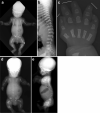







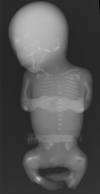
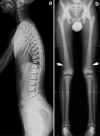




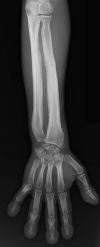
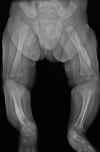


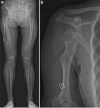



References
-
- Langer LO, Jr, Baumann PA, Gorlin RJ. Achondroplasia. Am J Roentgenol Radium Ther Nucl Med. 1967;100(1):12–26. - PubMed
-
- Tavormina PL, Shiang R, Thompson LM, Zhu YZ, Wilkin DJ, Lachman RS, et al. Thanatophoric dysplasia (types I and II) caused by distinct mutations in fibroblast growth factor receptor 3. Nat Genet. 1995;9(3):321–328. - PubMed
-
- Maroteaux P, Lamy M, Robert JM. Thanatophoric dwarfism. Presse Med. 1967;75(49):2519–2524. - PubMed
-
- Spranger JW, Opitz JM, Bidder U. Heterogeneity of Chondrodysplasia punctata. Humangenetik. 1971;11(3):190–212. - PubMed
Publication types
MeSH terms
LinkOut - more resources
Full Text Sources

